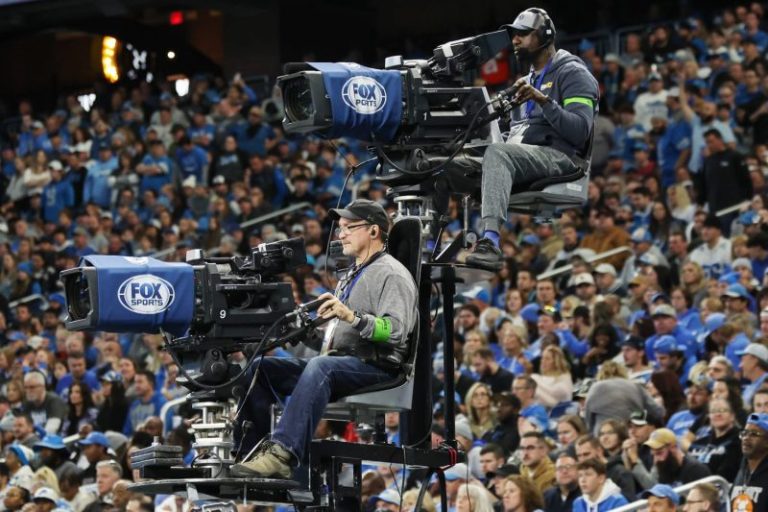In 2021, the National Football League signed an 11-year, $111 billion media rights deal. In July, the National Basketball Association signed an 11-year, $77 billion deal of its own.
What’s next? Well, not much all that soon.
While Ultimate Fighting Championship and Formula 1 have deals expiring in 2025, the vast majority of major college and professional sports have recently signed long-term media rights deals with U.S. TV networks and streamers.
Welcome to the sports media rights doldrums. Or, the calm before the storm.
The NFL can opt out of its current deal with all of its media partners — except Disney, which has a slightly different deal structure — after the 2028-29 season. By that time, driven by the pace of change among the largest media companies, the entire landscape could be significantly different than it is today, dramatically altering how much revenue leagues generate and who is paying.
“Anyone telling you with any degree of certainty the NFL is going to opt out or not is bananas,” said Daniel Cohen, executive vice president of global media rights consulting at Octagon. “There’s so much you can’t predict even two years out, never mind six.”
The NFL’s opt-out decision, while years away, is the next potential tectonic shift that will influence the balance of power in media. It’s possible the NFL could choose to end deals with longtime Sunday afternoon media providers such as Fox and Paramount Global’s CBS in favor of streamers, such as Apple, Amazon, Google’s YouTube or even Netflix.
It will also be a significant driver of future NFL team valuations. On Thursday, CNBC will reveal its Official 2024 NFL Team Valuations list, ranking all 32 professional franchises.
Given the current state of media, with Paramount Global agreeing to merge with Skydance Media by mid-2025, Warner Bros. Discovery actively looking for partners to build scale and share the cost of content, and Netflix jumping into live sports with its acquisition of Christmas Day NFL games, the potential bidders for games in four to five years could be dramatically different than today. That will determine how much of an increase the NFL may get on its next rights deal.
“There probably will be companies that don’t exist today that will merge to create new competitive bidders,” said former CBS Sports President Neal Pilson, who founded sports media consulting firm Pilson Communications. “Other deals, like the NBA, are a data point, but the NFL is its own marketplace. The programming is the honey. It’s all driven by the popularity of the NFL.”
Another determination of how much sports media rights deals will escalate in the future will be the state of the dwindling pay TV bundle. There have been 4 million pay TV customer losses this year to date, “a mindboggling total for just six months,” according to a recent MoffettNathanson report.
Live sports has long been the glue holding the bundle together, and a majority of viewership still comes from traditional TV versus streaming.
The economics of the bundle — still a cash cow for content providers like Disney and Comcast’s NBCUniversal — have driven rights increases for decades. Meanwhile, streaming has yet to turn a profit for most media companies.
Traditionally, the reach of broadcast networks, particularly in rural areas that still don’t have consistent high-speed internet, has caused the NFL to value Fox, Disney, NBCUniversal and CBS — all of which own broadcast networks. Most NFL games air on national broadcasters.
The NBA has also replaced its partnership with Warner Bros. Discovery, which doesn’t own a broadcast network, with NBCUniversal, which does.
But four years from now, it’s possible the ongoing shift to streaming, combined with Big Tech’s deeper pockets, will convince the NFL to view broadcasting as anachronistic rather than essential.
On the other hand, if streamers become the sole distributors of sports, they’ll have all the market power, which could stifle valuations.
“If you put all your eggs in the streaming parties’ baskets, and if legacy media is hobbled to the point they can’t pay for media rights anymore, then you’re giving streamers a lot of market power,” said Shirin Malkani, co-chair of the sports industry group at Perkins Coie.
Bank of America recently put together a chart of recent media rights deals and their estimated values. Some of the numbers are slightly different than reported figures.
The National Hockey League’s deal with its media partners lasts through the 2027-28 season.
Major League Baseball’s deal is up in 2028 — and will likely be shaped more by the expiration of the players’ collective bargaining agreement in 2026 than the state of the media industry. Still, the vastly changing regional sports business, on top of the traditional TV landscape, could make MLB a litmus test for the rights deals that follow.
The PGA Tour’s media deal runs through 2030. NBCUniversal owns the Winter Olympics until 2030 and the Summer Olympics until 2032. NASCAR signed a contract late last year with media carriers until 2031. ESPN locked up the College Football Playoffs until 2031. Apple inked a deal for Major League Soccer until 2032.
The long-term nature of these deals has given the current media ecosystem some certainty. That’s a benefit for the leagues, media companies and pay TV providers, who all rely on the consistency of cash flow.
“My advice to clients is that if you’re in a deal that feels fair right now, or that is analytically fair to good, don’t go searching for something great,” said Octagon’s Cohen, who represents several professional sports leagues in their media deals. “Things will keep evolving over the next six years, so it’s best to hold onto a good deal.”
Disclosure: Comcast’s NBCUniversal is the parent company of CNBC.

